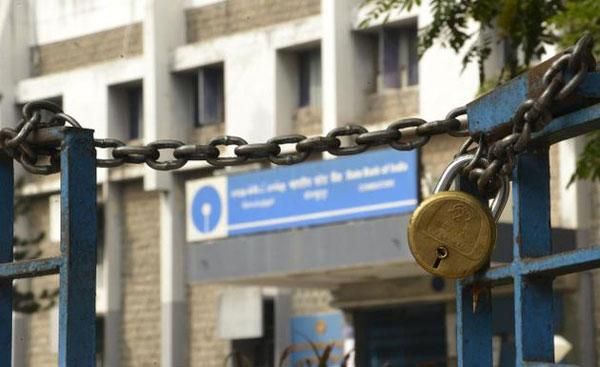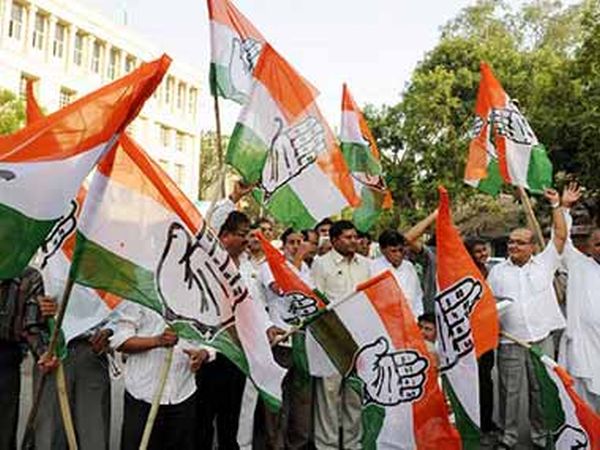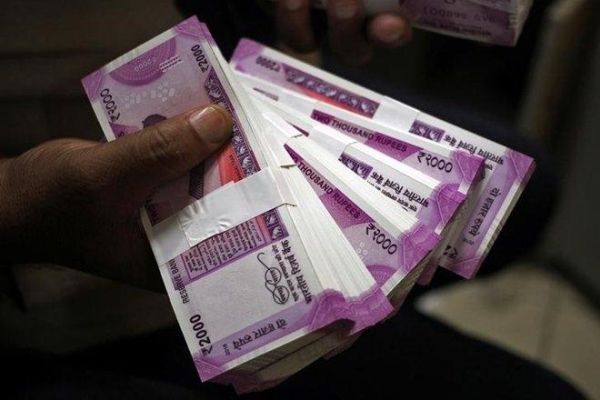
by Editor | May 25, 2021 | Banking, Corporate, Corporate finance, Corporate Governance, Economy, Finance, Markets, News, Politics
 New Delhi : The central government’s recent decision to recapitalise public sector banks (PSBs) has led to a surge in credit growth, the government said on Saturday.
New Delhi : The central government’s recent decision to recapitalise public sector banks (PSBs) has led to a surge in credit growth, the government said on Saturday.
Finance Minister Arun Jaitley said that credit growth would go further up once the infusion of capital takes place into the baking system.
According to Financial Services Secretary Rajeev Kumar, the banking sector posted double digit growth on a year-on-year basis in December 2017.
“Surge in credit growth: Sustained momentum post-PSB recap decision — Banking sector posts double digit (10.7 per cent Y-o-Y) growth in Dec’17, up from (7.2 per cent Y-o-Y) in Oct’17, powered by services and retail,” Kumar tweeted.
Later in the day, Jaitley said the lending that the banks do is an indication of how growth will move.
“The latest data has shown that credit growth has moved up. And once the infusion of capital takes place into the banking system, credit growth will further go up,” he said during 75th anniversary celebrations of the UCO Bank.
—IANS

by Editor | May 25, 2021 | Banking, Economy, News, Politics
 New Delhi : The Congress on Thursday hit back at Prime Minister Narendra Modi on his charge that banks were forced to give loans to select industrialists during UPA rule, saying bad loans increased in his regime.
New Delhi : The Congress on Thursday hit back at Prime Minister Narendra Modi on his charge that banks were forced to give loans to select industrialists during UPA rule, saying bad loans increased in his regime.
The Congress also demanded a probe by independent agencies into the issue.
“Yesterday (Wednesday) Modiji said that NPA is the biggest scam. We agree with it but we want to know who gave birth to it,” Congress spokesperson Randeep Singh Surjewala told reporters here.
Attacking the Modi government, Surjewala said: “When the Congress lost power in 2014, as per the Reserve Bank of India (RBI), gross NPA of public sector banks in 2013-14 was Rs 2,27,264 crore.
“And as per PIB (Press Information Bureau) press release dated October 24, 2017, this has increased in June 2017 to Rs 7,33,137 crore,” he said. “The NPA in 42 months of Modi government increased by Rs 5,05,873 crore.”
He said the gross NPAs of scheduled commercial banks in 2013-14 was Rs 2,63,372 crore.
“And as per the rating agency CARE, gross NPAs of scheduled commercial banks has increased to Rs 8,29,338 crore. Thus, in 42 months of Modi government, it has increased by 5,65,966 crore,” he said.
Surjewala also said that under Modi government, a total of Rs 1,88,287 crore loans of the industrialists were waived off.
“In 2014-15, the NDA government waived loans of Rs 49,018 crore, in 2015-16 it waived off Rs 57,586 crore of loans and in 2016-17 it waived off Rs 81,683 crore loans of industrialists,” he said.
“If he described NPA as the biggest scam, he should then answer why is such a big scam happening under his nose?” the Congress leader asked.
“The Prime Minister must also tell as to why has his government waived loans of wilful defaulters worth Rs 1,88,287 crore in the last three years?”
He dared the government to order a probe by independent agencies into the same.
On Wednesday, Modi attacked his predecessor Manmohan Singh and the UPA government, saying some of its “people” had forced banks to lend to some industrialists, which he described as the “biggest scam”, bigger than the 2G, coal and Commonwealth Games scams.
—IANS

by Editor | May 25, 2021 | Banking, Corporate, Corporate Buzz, News
 Mumbai : The Reserve Bank of India (RBI) on Wednesday cautioned some co-operative societies against the use of word “Bank” in their names.
Mumbai : The Reserve Bank of India (RBI) on Wednesday cautioned some co-operative societies against the use of word “Bank” in their names.
“It has come to the notice of RBI that some Co-operative Societies are using the word – Bank – in their names. This is a violation of Banking Regulation Act, 1949 (As Applicable to Co-operative Societies),” the central bank said in a statement.
It also said that it has come to the notice some co-operative societies are accepting deposits from non-members or nominal members or associate members which tantamount to conducting banking business in violation of the provisions of the 1949 law, stressing such societies have neither been issued any licence under the act nor are they authorised by the RBI to undertake banking business.
The RBI also advised the public to “exercise caution and carry out due diligence of such co-operative societies before dealing with them”.
—IANS

by Editor | May 25, 2021 | Banking, Economy, Finance, Markets, News, Politics
 (Note Ban Series)
(Note Ban Series)
By Fakir Balaji,
Bengaluru : There’s one sector which gained more than any other from the centre’s demonetisation move — the banks. Perennially reeling under the burden of bad loans, they seemed to have got a respite even as their customers had to go through wrenching pain.
“Demonetisation was a blessing in disguise for us, as the number of new accounts has gone up 25 per cent over the months and 40 per cent of our customers have switched over to internet or mobile banking, reducing their visits to the bank for cash or other transactions,” State Bank of India (SBI) senior manager S. Srinivas Rao told IANS here.
Banks have also seen a surge in the demand for debit and credit cards, online transactions and fund transfers through RTGS and digital payments. The banks also became flush with cash for several weeks, allowing them to provide easily for their doubtful debts.
Though banks are back to normal operations, economic slowdown, poor credit off-take and dwindling business of their customers after the Goods and Services Tax (GST) regime came into being on July 1 have made them pause over their gains from the note ban.
But it was not without pain for the banking sector. The dramatic nationwide announcement on November 8 by Prime Minister Narendra Modi and the secrecy of the move meant the banks turned into battle zones between employees and thousands of customers who became agitated as time went by to exchange or deposit their banned notes.
“It’s better to forget the harrowing time we had during those 50 days, as we were at the mercy of the treasury for the new notes (Rs 2,000 and Rs 500) or lower denominations to exchange them for the old notes,” recalled Rao.
As 86 per cent of the currency in Rs 500 and Rs 1,000 notes went out of circulation, it not only disrupted banking operations but also put undue pressure on bank employees who were not trained or prepared to deal with such a chaotic situation.
“It was a double whammy for us as we were under severe pressure from the management to handle the volatile situation with patience and serve the customers with limited staff and resources,” Karnataka Bank’s industrial finance branch manager, Sadananda Kumar, told IANS.
With hundreds of ATMs (Automatic Teller Machines) running out of cash or remaining dry for days and weeks, banks faced customers’ wrath due to cash crunch even in lesser denomination notes of Rs 100, Rs 50, Rs 20 or Rs 10.
“Receiving or exchanging banned notes was also tough, as hundreds of ordinary people with no bank account also queued up with our customers. The problem turned worse, as many of them didn’t have PAN card or Form 60, which was mandatory to deposit or draw above Rs 50,000 in lieu of the old notes,” lamented Rao.
Clueless about the note ban and reasons for their money becoming worthless, thousands of unbanked people panicked and rushed to the banks clutching Rs 500 and Rs 1,000 notes, hard-earned or saved over the years, to exchange for the elusive new notes whose short-supply could not meet the sudden demand.
“While the jury is still out on the pros and cons of the note ban, we were caught between the government and the people, as we had no answers for their questions or sufficient cash to exchange or meet their demand,” said a state-run bank regional manager who did not want to be named.
The demonetisation also led to a dramatic spike in deposits of the banned notes by the existing and new customers during the 50-day window, while withdrawals were stymied by the cash crunch.
“The rush for depositing banned notes less than Rs 50,000 at a time was more and frequent than for withdrawals, as many customers were wary of giving the mandatory PAN number or filling Form 60 fearing they would be questioned by tax officials later on the source of their money,” pointed out the manager.
The note ban resulted in manifold increase in CASA (Current Account and Saving Account) deposit ratio of the banks, giving enough funds to make provisioning for the rising non-performing assets (NPAs).
But it took a heavy toll of the banking employees, especially women and officers, as they had to work for 12-18 hours a day initially without even a weekly off, leave or holiday.
“Besides facing angry and impatient customers for days and weeks, we were overburdened with paper work and computing. We were under pressure to meet the needs of business and regular customers as their transactions were mostly in cash. We had to ration cash to meet the needs of all customers and avoid accusations of being partial to some at the expense of others,” said Lata Rao, a bank officer.
(Fakir Balaji can be reached at fakir.b@ians.in)
—IANS

by Editor | May 25, 2021 | Corporate, Corporate Reports, Markets, Networking, Technology
 Bengaluru : ATM malware has evolved from requiring physical access to infect the machines to now successfully attacking network-based access using the bank’s corporate network, a new report said on Tuesday.
Bengaluru : ATM malware has evolved from requiring physical access to infect the machines to now successfully attacking network-based access using the bank’s corporate network, a new report said on Tuesday.
Global cyber security solutions leader Trend Micro and Europol’s European Cybercrime Centre (EC3) released a comprehensive report titled “Cashing in on ATM Malware”, that details both physical and network-based malware attacks on ATMs as well as highlights where the malware is created.
The report dissects recent attacks using bank networks to both steal money and credit card data from ATM machines, regardless of network segmentation.
“The malware being used has evolved significantly and the scope and scale of the attacks have grown proportionately. While industry and law enforcement cooperation has developed strongly, the crime continues to thrive due to the major financial rewards available to the organised crime groups involved,” said Steven Wilson, Head of EC3.
These attacks not only risk personally identifiable information (PII) and large sums of money, but also put banks in violation of PCI-compliance standards.
“Protecting against today’s cyber threats and meeting compliance standards require increased resources that are not always available for organisations, including those in the financial services industry,” added Max Cheng, Chief Information Officer for Trend Micro.
Public-Private Partnership strengthen the global, ongoing fight against cybercrime, and help fill the resource gap for organisations.
“A well-designed security plan can go a long way towards ensuring that an ATM installation can become very difficult to exploit and victimise,” said Nilesh Jain, Country Manager-(India and SAARC), Trend Micro.
—IANS

 New Delhi : The central government’s recent decision to recapitalise public sector banks (PSBs) has led to a surge in credit growth, the government said on Saturday.
New Delhi : The central government’s recent decision to recapitalise public sector banks (PSBs) has led to a surge in credit growth, the government said on Saturday.



